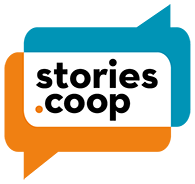1974 saw the founding members of Vancouver Cooperative Radio, CFRO-FM shoveling inches of pigeon droppings out of an abandoned building in a marginalized neighborhood. The Canadian Radio-Television and Telecommunications commission had just granted the co-op a license and the group hurried to move into its new home, a long-unused bank. They replaced dust and bird nests with microphones and soundboards. They invited the surrounding communities to come in and share music, art and ideas with anyone who could pick up the signal.
These first members might have felt like Tesla, Marconi and Fessenden did when they began experimenting with radio transmission in the early 1900s. At that time people thought the new technology was just a fad. Young boys built short wave radios and learned Morse Code. No one else paid the innovations much attention. By the 1920s, though, radio capabilities had advanced and privately owned stations began broadcasts. The power of radio, the immediate transmission of sound to a wide audience, became a crucial media and entertainment force.
Like the first proponents of radio, the Co-op Radio started out as a small group, just 231 members. Those individuals, however, knew they were a part of something important. Like the medium of radio itself, the co-ops listenership and impact has increased exponentially. Today the co-op still works out of that same neighborhood, but the place they can call home is far larger than one bedraggled building. 30,000 members listen throughout 944,735 square kilometers.
More than the volume of listenership, Radio Co-op measures success through its decades-long dedication to underrepresented people. The co-op, unlike most radio, receives no funding from advertisers. Instead, members and listeners entirely support and direct the station. That means CFRO can and must give voice to individuals, communities, music, art, ideas and questions not usually allowed exposure on private radio stations.
CFRO runs twenty-four hours a day and very few of those hours have the same hosts or content. Tune in to 100.5 for the week and you will hear a massive range of music, discussions of art and politics as well as alternative news sources. About twenty percent of the broadcast happens in languages other than English. Anthology of Jewish Music, Mundo Flamenco, The Iranian Womens Show, Gospel Train, South Slavs and eighty-five other programs all live harmoniously on the weekly schedule. They all record out of the same sound booths. They all call Co-op Radio their home.
A staff of only four part-time paid employees (all femalea rare thing in Canadian radio) manages CFRO. Such a massive undertaking is possible because they do not work alone. 350 volunteers dedicate time to the station. Throughout its almost 40 years, Co-op Radio has fallen on some hard economic times, but volunteers, staff and members pull together to keep the station talking to listeners. For thousands of people, the station is a priority.
In an era where TV and Netflix dominate media, where individuals have access to constant, instant entertainment and news, it is testimony to the work of the station that what they do remains vital to their city. People keep listening.
The station has come a long way from the days when volunteers had to hand deliver tape from studio to transmitter. In every way they can, Co-op Radio keeps up with the times. Embracing new technologies and trends, the station streams content through their website and offers podcasts.
While the distribution of radio may be changing, staff, members and listeners know that the basic importance of transmitting sound, the voices and music of people, has not diminished. There is no reason to think that CFRO will stop communicating with Vancouver any time soon.
